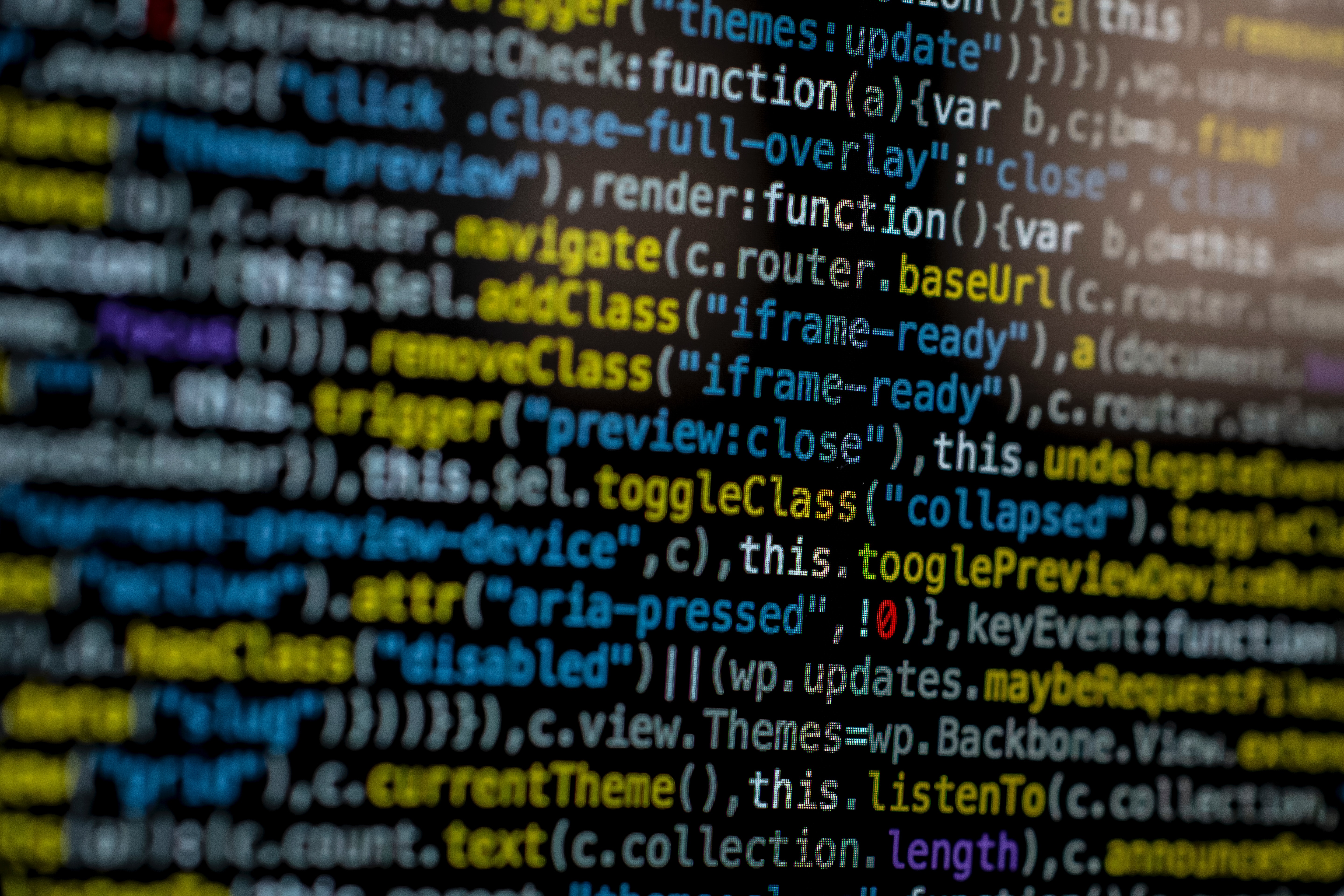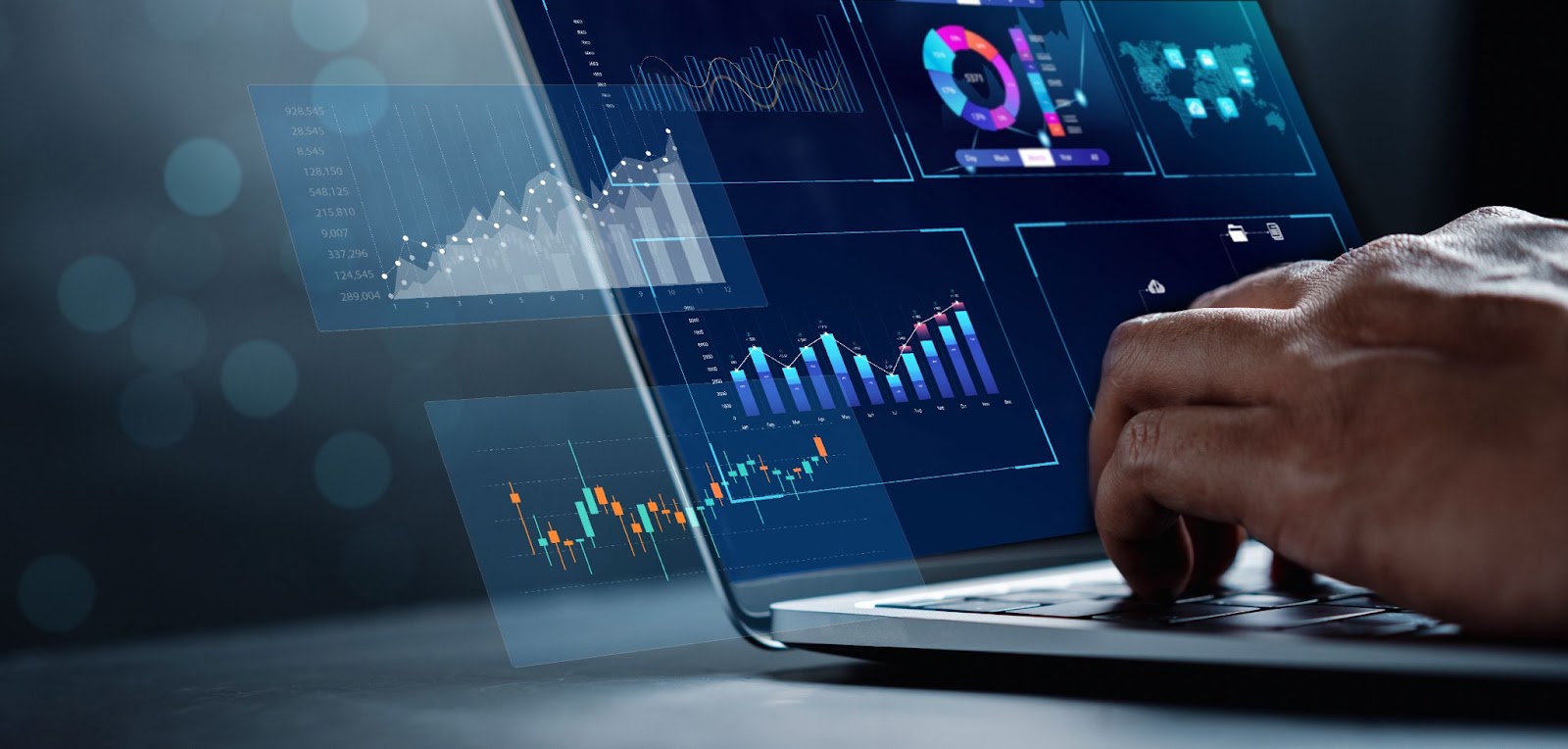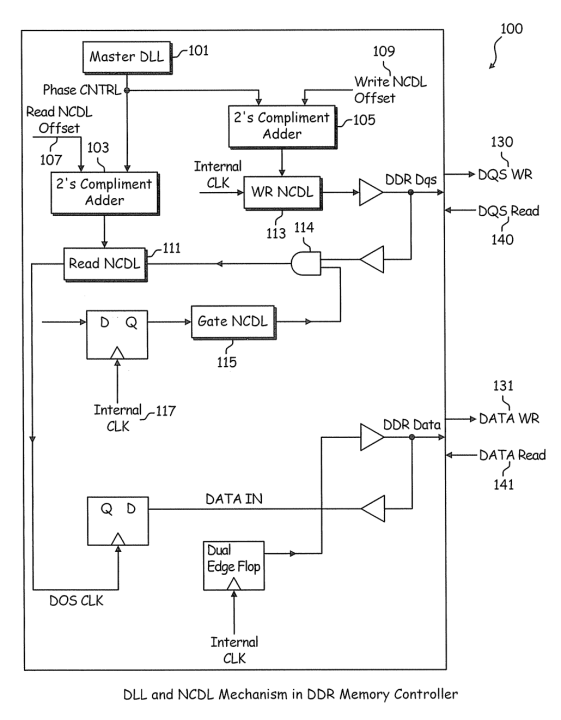When we think of modern technology such as phones or computers, we often don’t think about the inner technologies behind the functionality and formation of our favorite products. The average laptop has six basic parts: the random access memory (RAM), hard drive, battery, fan, motherboard, and the central processing unit (CPU). These components working together to form a laptop was established back in 1981. Like the portable computer, many tech ideas as a whole have already been produced, due to the lack of novelty and nonobviousness they cannot be patented. What can be patented is the method and display of the interaction between these parts which make up the general product.
One way the patents behind technology are classified is by Cooperative Patent Classification (CPC) codes established by the United States Patent and Trademark Office (USPTO). These CPC codes are broken down into levels. The most general classification by industry is represented with one letter. This is segmented into the next level of groups, called the Top Level CPC code in the ktMINE database. Each of these Top Level CPCs is broken down further into hundreds, sometimes thousands of unique subgroup codes called the Full-Text CPC. Multiples of both Top Level and Full-Text CPCs can be used to label a patent. Each level of CPC codes gets more specific on the descriptors of the patent. However, though we can easily look up CPC codes, their labels don’t offer much insight into the type of patents that exist under them, especially if your work does not focus on the particular field which uses or analyzes these patents. Examining the most common CPC codes associated with both recent and old tech patents we can get a better understanding of the most common types of technology patents and which companies are behind them.
“G” and “H”
Searching ‘technology’ from 2004 – present within the ktMINE platform reveals the top three Top Level CPC codes fall under general categories H (Electricity) and G (Physics). It can be noted that even without this date range, “G” and “H” remain the top two kinds of technology patents. Let’s look into three of the current most common Top Level CPC codes in the technology industry to get a better idea of their respective patent portfolio.
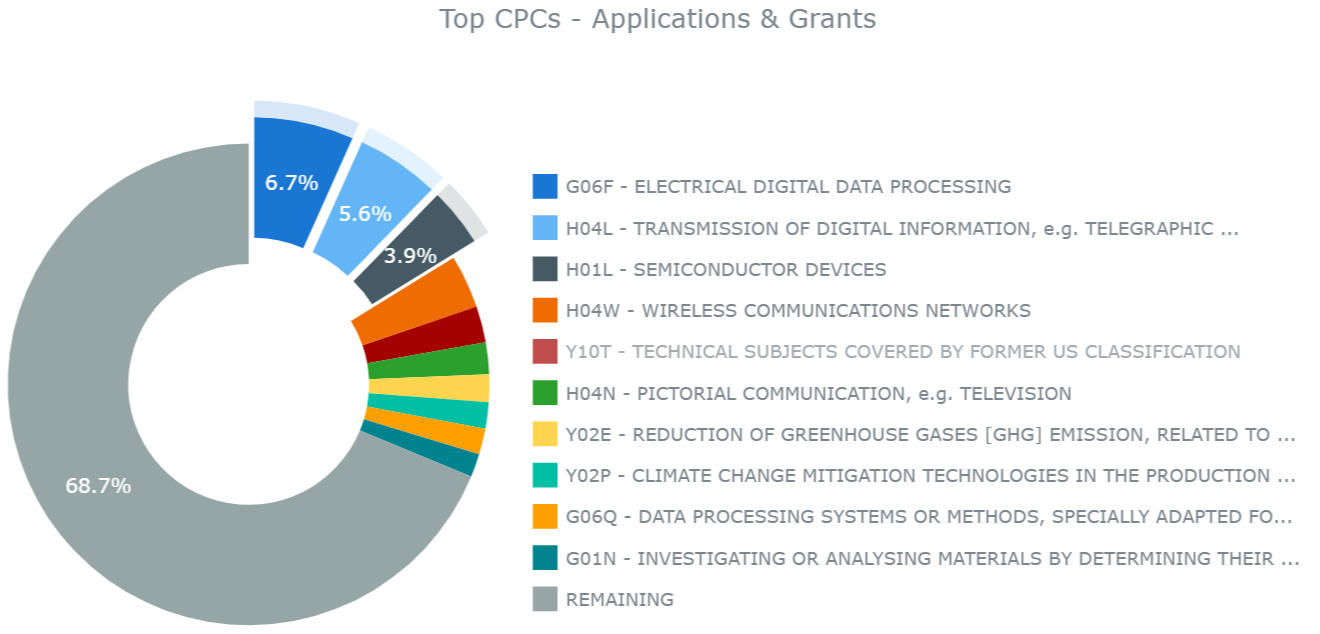
Graph representing the top Top Level CPC codes for technology. Source: ktMINE patent database
The Electrical Processing of Digital Data
The most commonly used Top Level CPC is G06F which is comprised of patents related to “electrical digital data processing.” The company with the greatest number of patents produced under this CPC code is International Business Machines Corp, better known as IBM.
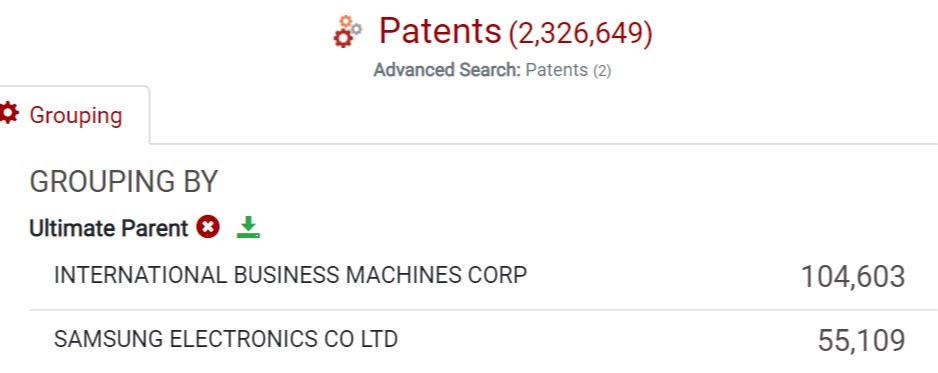
The amount of G06F patents held by IBM, and the runner up is Samsung. Source: ktMINE patent database
Some of IBM’s earlier patent filings under G06F include various adding, multiplying, and dividing calculator devices. One of IBM’s calculators from 1954, the first mass-produced computer, is shown below. More recently, in 2017 IBM patented US10170100B2 which uses “sensor based text-to-speech emotional conveyance.” It is explained as:
“A computer-implemented method includes determining, by a first device, a current emotional state of a user of the first device. The current emotional state is based, at least in part, on real-time information corresponding to the user and relates to a textual message from the user. The computer-implemented method further includes determining, by the first device, a set of phonetic data associated with a plurality of vocal samples corresponding to the user. The computer-implemented method further includes dynamically converting, by the first device, the textual message into an audio message. The audio message is converted from the textual message into the audio message based, at least in part, on the current emotional state and a portion of the set of phonetic data that corresponds to the current emotional state.”
An example of a technology currently on the market with a CPC code of G06F is face-recognition. The range of G06F patents includes processing numerical data, to processing sensors for realistic digital communication. In the case of electrical digital data processing, the patent can include the embodied design or simply state how it could be implemented by other existing capable embodiments, as was done in the more recent IBM patent. But they are categorized together by the process of electrically providing data based on information received.
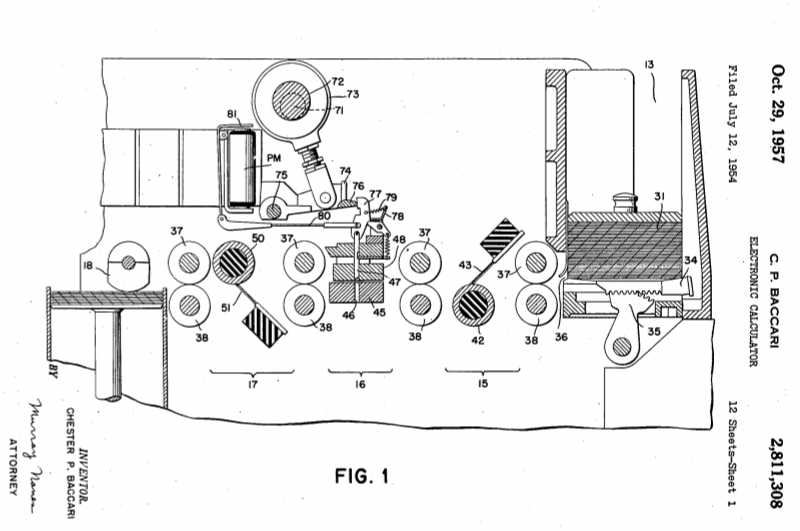
IBM’s “Electronic calculator” patent. Source: ktMINE patent database
Transmission of Digital Data
The next two Top Level CPC codes fall under the Electricity category. HO4L, the second most commonly used Full-Text CPC code in technology patents, is described as the “transmission of digital information.” Unsurprisingly, Qualcomm Incorporated, a company which produces semiconductors and telecommunications equipment, owns a large number of patents within this category. An example of a Qualcomm patent applied for in 2018 with a HO4L CPC code is US2019036976A. This patent secures the method of providing further security when connecting to a remote server by implementing a shared secret or password after it is determined that the server “supports at least one predetermined IP layer security protocol.” This can be utilized by any device capable of connecting to a network. Another comparable application is a patent granted to Facebook Inc. regarding the process and interface of their messenger app. These H04L patents deal with the process of communication between two or more parties. This Facebook patent has more to do with the presentation of the information sent between two users, while the Qualcomm patent deals more with the automatic communication between a user and a computer.
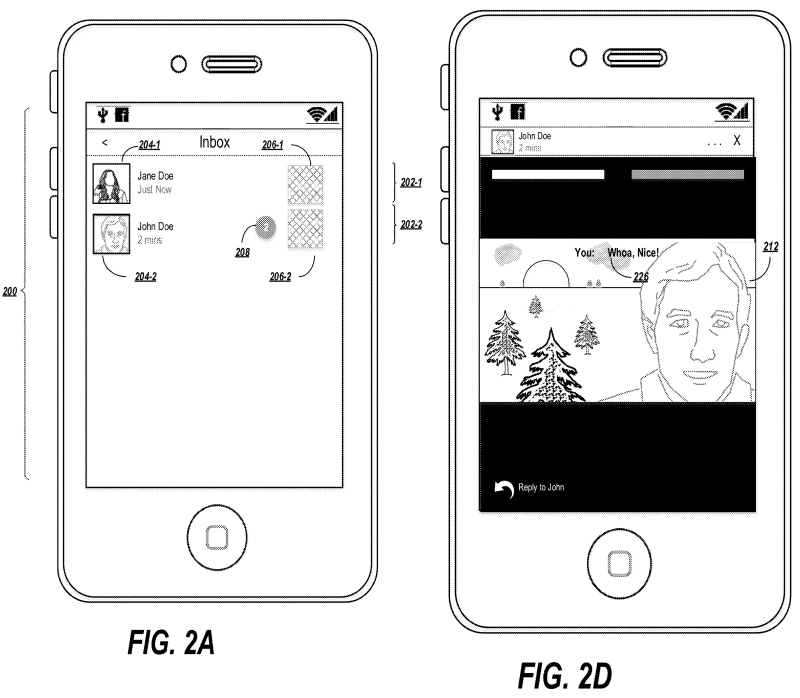
Facebook’s “INTERFACES FOR A MESSAGING INBOX” patent. Source: ktMINE patent database
Semiconductor Devices
The third most popular Full-Text CPC code is H01L which represents “semiconductor devices,” a production area which is dominated by Samsung Electronics Co Ltd. Semiconductors create electrical energy and are used to make computer chips which are then used to process electronic device. An H01L Samsung patent from 2014 secures the aspects of the display of a device with the preferred application being a wristwatch. It describes using an organic light, selective adjustments of the display of the light dependent on use, and a transparent display. When not supplied with electricity, the transparent display (Figure 5 below) allows for the visibility of the second, background screen (Figure 6) which does not need electricity. This helps optimize energy use and cut manufacturing costs. A lot of the patents within the H01L CPC code category are related to displays and their capabilities. An older patent of Samsung’s which we can see the results of today is the Flat Panel Display from 2004. This patent involves technology that improves image quality by eliminating the stripes that use to appear on TV screens. However, it is not to be mistaken for the first flat screen, as this was accomplished 40 years prior to this Flat Panel patent.
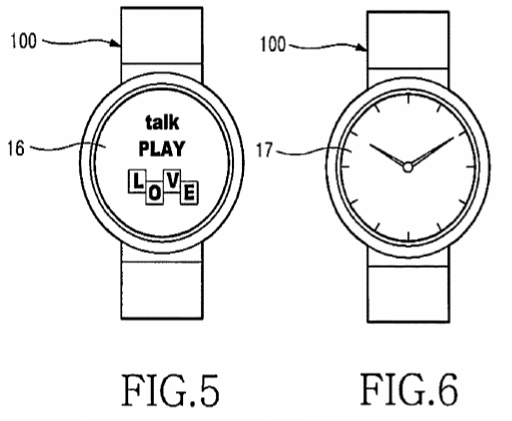
Samsung’s “Transparent display apparatus” patent. Source: ktMINE patent database
Sharing is Caring
Often times, when a company invents an innovative method or system, especially one that shows success, their competitors will strategically incorporate something similar to stay competitive. This can be done in a few ways. One common way is through licensing patented technologies. There are many examples of licensing agreements that can be found in the ktMINE database. Though this may not be the most common route for companies to take, tech powerhouses such as Qualcomm, IBM, and Samsung have turned to license agreements to remain competitive. For example, you can find a cross-license agreement between Qualcomm and Samsung allowing the use of one another’s patents for their products. Qualcomm also has an agreement with Apple as its chip supplier. While some of Qualcomm’s licensing agreements might be going well, they are currently dealing with an ongoing legal dispute with Apple over the financial terms of their agreement. So while it can be helpful to license a patent, it can come at a price.
Expiration and Prior Art
The easiest way to legally recreate an idea behind a tech patent is to wait for it to expire. Patents have a lifetime of 20 years, so in some cases, the wait is not feasible for companies trying to stay up to speed with the competition, but it’s something to keep in mind. Another relatively easy route to consider is whether it qualifies as “prior art.” This occurs when an idea isn’t unique enough to patent because it has been done before in a similar manner. Even though a patent has been applied for, if it is not likely to be granted, one could preemptively copy it. This was the case with the touch screen which was invented in the 60s, and simply improved upon and incorporated with the iPhone. After Apple’s resulting success, many others were able to follow suit with their own version of a touch screen phone. However, Apple has an advantage by having obtained approval of a G06F type patent regarding motions and touch patterns associated with the touch screen. As we will see next, even having a patent and not sharing it does not mean the end of the road for others using it, or at least something similar to it.
Creativity
Another way tech companies often get around patents that have shown success in the market is by making creative workarounds so that it’s considered unique in comparison to its inspiration.
One example is the use of a fingerprint to unlock a device (categorized under G06F). Though the iPhone 5s received a lot of success, the device was not the first of its kind. It was Samsung’s Motorola Atrix to first use fingerprint scanning technology. However, Apple made significant changes by revamping the method, being the first to use capacitive scanners (vs Samsung’s optical scanner), and widening its application such as to make secure payments. Another similar and more recent situation is seen with face recognition technology. Though highly associated with the iPhone X, Apple was not the first one to incorporate facial recognition in a phone. This was done back in 2011 with a Google software update on an Android phone and was patented by Google in 2012 (patent is shown below). Apple’s face recognition technology was published this year in 2019. By using a different method, Apple again took an old idea and made it better. While Google achieved recognition through a technique of analyzing pictures of the face, the iPhone supports 3D analyzation via light rays to scan the face.
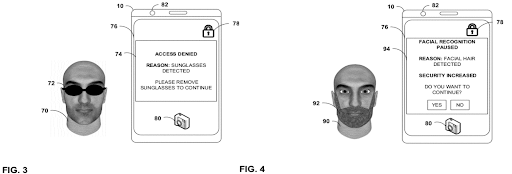
Google’s “facial feature detection” patent. Source: ktMINE patent database
One should be careful, however, when using a previously done idea, as the changes must be unique in the process and/or application. If the product is too similar lawsuits may arise. Samsung is making original strides with the announcement of their folding touch-screen device to be released this year (most recent patent for this can be seen below), and uniquely innovating the fingerprint scanner with their Galaxy S10.
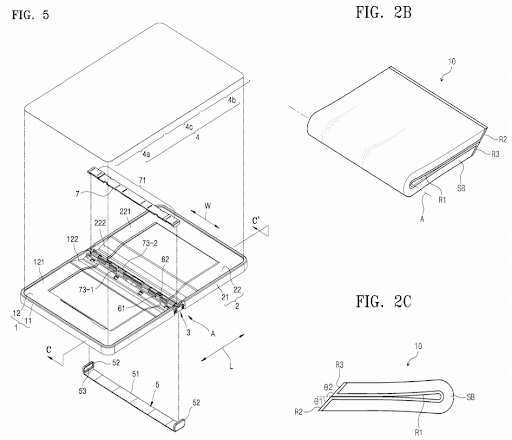
Samsung’s FOLDABLE DEVICE (Figure 5) and FOLDABLE DISPLAY (Figure 2B and 2C) patents published January 24, 2019 source: ktMINE patent database
Oh, the Places They’ll Go
The categorization given from CPC codes allowed us to identify the most used patents in technology and dig deeper into what they actually offer us in products on the market. Overall, Electricity and Physics advance the way we send and receive information (H04L), how it’s processed (G06f), and then presented to you (H01L); all methods that make up the majority of today’s technology patents. These tech patents we looked at aren’t made to sell as is, but to play a role in a bigger product. Because of this, technology patents are more capable of intersecting with all types of products and industries outside the world of tech. Whether their platform of intended use is specified or not, it’s clear most technology patents intend to be incorporated into the mobile devices we use every day, though they will likely also end up in our cars, accessories, and homes.
